Designing a restaurant floor plan involves more than rearranging tables. Your restaurant design both supports functional workflow and conveys your brand to patrons. Experts concur that a 6-step approach works best, starting with allocating space to your kitchen and dining locations. A 40/60 split is the rule of thumb but can vary based on your own dining concept.
Before we dive into the specifics of how to create the best floor plan for the restaurant, we recommend you attempt Lightspeed Restaurant to help handle your tables and seating. Lightspeed enables you to update your floor plan in real time to accommodate last-minute bookings and big groups. It is possible to remove or add tables on the fly to accommodate rushes and use colour indicators to find out whether a table is completely free, occupied, or prepared to cover. Try Lightspeed Restaurant free for 14 days.
Visit Lightspeed
Step 1: Take the Most Important Spaces in Your Restaurant Floor Plan
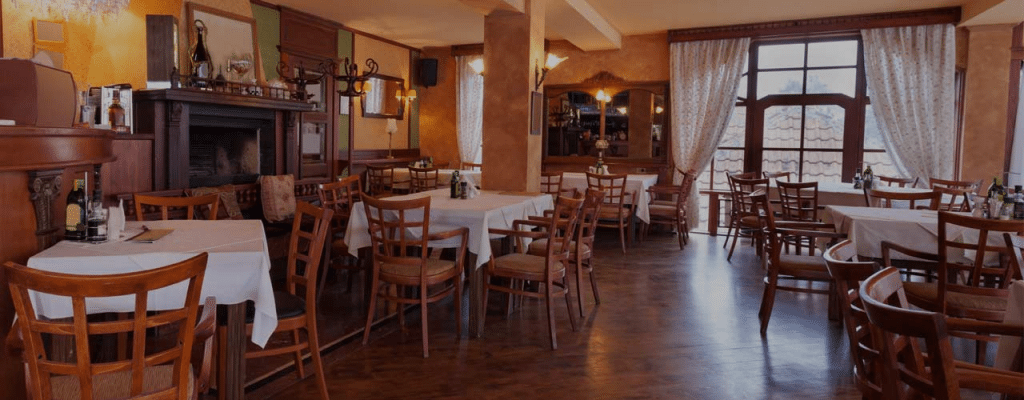
Source: WebstaurantStore
You have several primary spaces to take into account in your restaurant floor plan. How you tackle all these elements plays a part in your operating efficiency and the quality of service you send to patrons. These include:
- The Kitchen — In most restaurant floor plans, the kitchen occupies about 40 percent of your area. This might seem to be a lot for a distance that patrons never see, but it’s the center of your small business. It is crucial that you begin here on your own restaurant floor plan so that you don’t shortchange this area.
- Restrooms — If you’re able to place restrooms near your kitchen area, you can save yourself money by linking into nearby pipes and water lines. Based upon the size of your space, it can be a good idea to add a staff-only restroom and changing area, also.
- Bar or Countertop Area (Optional) — A bar or counter service area may be a fantastic addition to your restaurant space, even when you’re not a pub or quick-dining establishment. It provides a comfortable waiting area if space is tight and adds popular counter seating for casual dining concepts.
- The Dining Area — This is the comfortable zone of your restaurant floor plan. Adequate seating and traffic flow would be the two most important ingredients in this area. After that’s established, you are able to apply design components that convey your concept and brand. Your objective is an inviting, comfortable space that attracts patrons in and makes them want to return.
- The Entry & Waiting Area — Your entrance is your billboard for your restaurant. It should communicate your concept and lure passers-by to enter. Once inside, the waiting and greeting regions rely on the form of establishment. For casual and fine dining, this place needs serious consideration for those who have wait times. For fast cafe and dining notions, this space can be minimal, especially in case you have a bar for counter service.
Clearly, there’s a lot to consider in your restaurant floor plan along with addressing everything correctly requires time and money. But there is one shortcut in this process that effective restaurateurs often implement, which is: Do not re-create the wheel. If you can find an existing space with key elements already set up, you will save time and money on your own launch.
Pro Tip: Start With an Existing Restaurant Space
Moving into an existing restaurant space that collapsed for reasons aside from place can cost far less than building from scratch. Closed restaurant spaces have water and plumbing lines set up; built-out kitchen, dining, and restroom areas; and oftentimes already include equipment such as walk-ins and vents. Going this route, much of the heavy lifting is already done for you about the former owner’s nickel. You simply need to employ your concept into the space”
— Glenn D. Cordua Cruz, Ph.D., Assistant Professor, Conrad N. Hilton College, University of Houston & Co-Founder of those Cordua Family Tavern
With an present space, you will still have to tweak and change several components. However, Cordua states, remodeling costs are a fraction of what you’d spend on a new kitchen building, therefore it’s something to consider. Cordua also recommends locating a business real estate specialist with restaurant experience that will help you find the perfect restaurant location to rework and also assist with loans and financing options.
But you secure your distance, as soon as you begin to sketch out ideas, an internet restaurant floor plan manufacturer such as SmartDraw simplifies the entire procedure. We feature several of its own readymade restaurant floor plan templates below for inspiration. Now, let’s explore each one of the major elements of your restaurant floor plan in detail.
Step 2: Place & Plan Your Own Kitchen Space
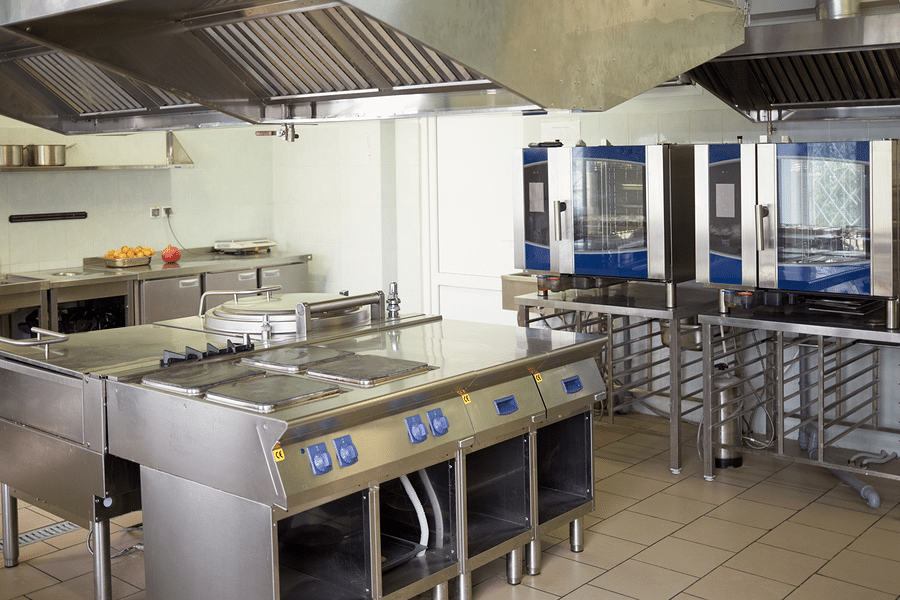
An island-type kitchen design, shown previously, creates an open workflow between prep and cooking channels.
Source: BigStock
Your kitchen positioning and workflow program is the most essential element in your restaurant floor plan. When it does not work, neither does your restaurant. It is that easy. That’s why the kitchen is the first part in your listing. Complete Food Service magazine indicates that 30% to 40 percent of your area should be allocated into your kitchen to allow adequate food prep, cooking, server pickup space, as shown below:
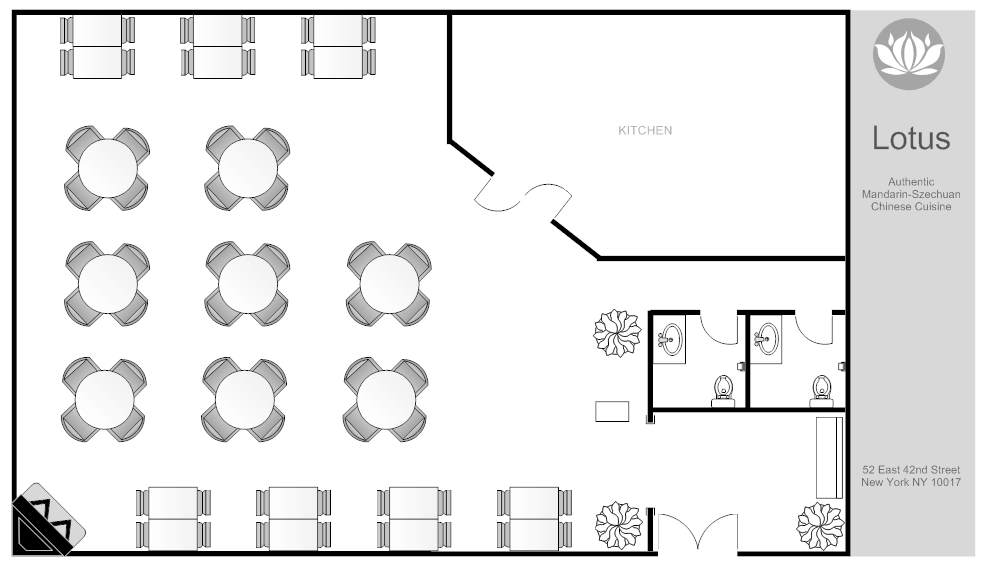
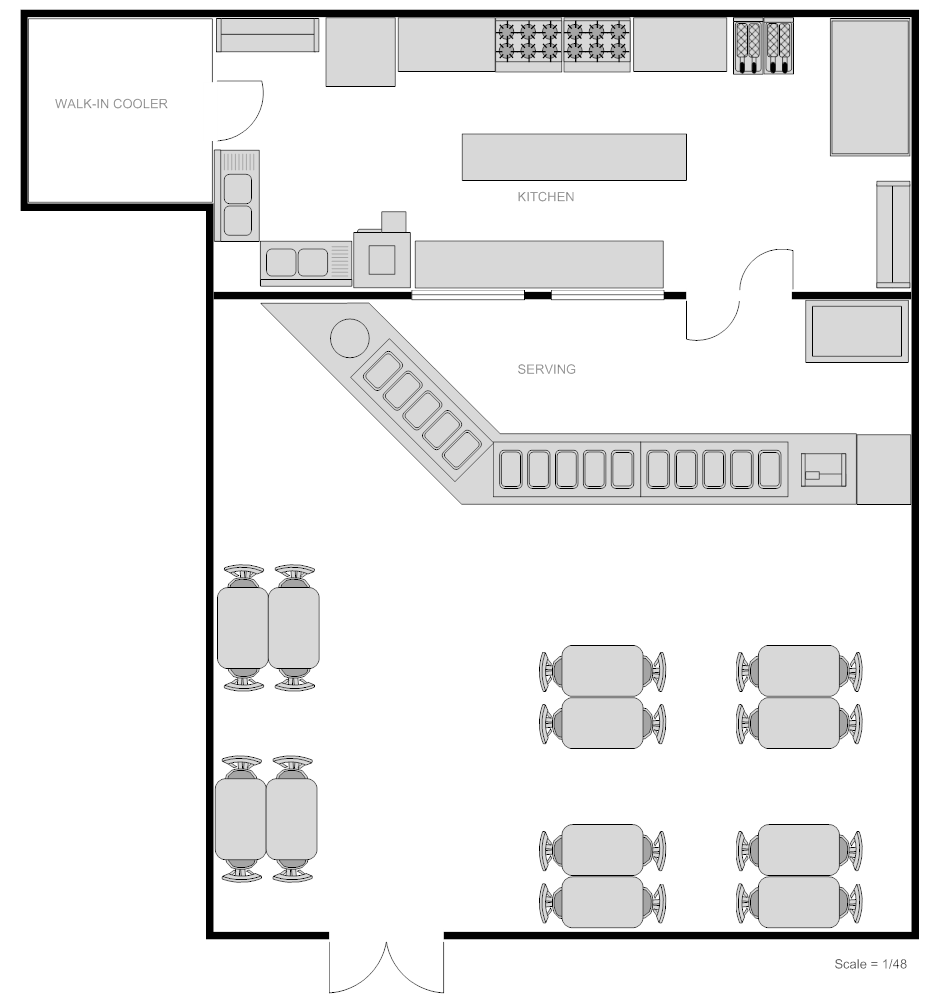
Whether running a buffet operation or a bistro, identifying considerable space for your kitchen is Step 1
Source: SmartDraw
Once outlined in your own restaurant floor plan, your kitchen space also requires attention. Here are the 3 main commercial kitchen designs which restaurant usage: Assembly Line, Island, and Zone.
Assembly Line Commercial Kitchen Design
This commercial kitchen design provides 3 different areas for food production. It moves raw foods via a series of parallel stations from prep, cooking, and plating to host pickup. This setup tends to maintain staff in defined workspaces with less motion between channels.
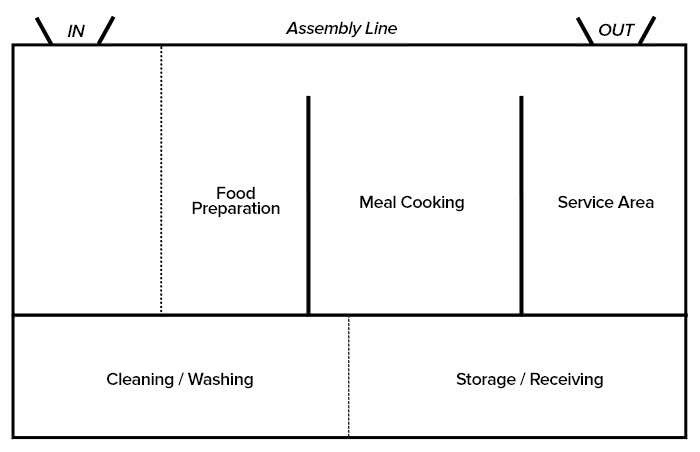
The Assembly Line kitchen design is the go-to design for many restaurants.
Source: WebstaurantStore
To be prosperous, it’s essential that a restaurant creates food effectively with minimal labor. A kitchen installation that runs parallel lines for food prep, cooking, plating, and host pickup will be the very best utilization of space to move food along an assembly line from uncooked to plate.
— Glenn D. Cordua Cruz, Ph.D., Assistant Professor, Conrad N. Hilton College, University of Houston & Co-Founder of those Cordua Family Restaurants
Many experts concur that the assembly line kitchen that the most efficient setup to get a volume performance, like a busy restaurant or institutional functioning. But it also works well in smaller operations, particularly those that create similar menu items, like a sandwich or pizza store.
Island Commercial Kitchen Layout
An island design allows more employees motion and oversight between stations than a parallel assembly line setup. All cooking equipment: grills, ovens, fryers are centralized, and the other work areas line the perimeter, effecting a round flow for food production. This design works well in a bigger performance, but can also be effective at a smaller operation where staff should move one of the cooking and prep channels to insure multiple kitchen roles.
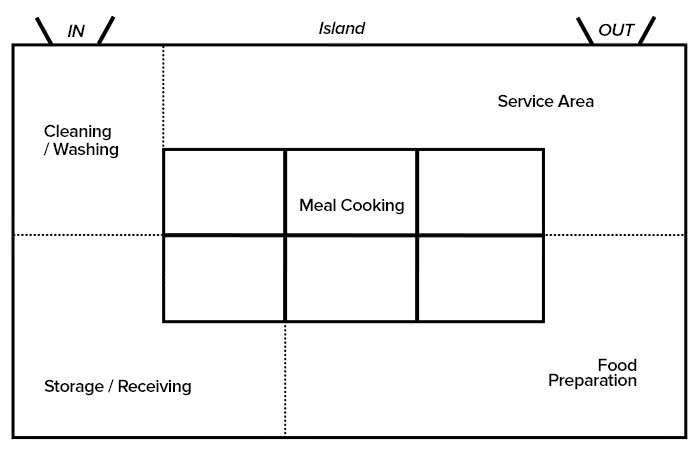
An Island kitchen design allows ample movement between stations and maximum oversight.
Source: WebstaurantStore
Zone Commercial Kitchen Design
Like a backyard kitchen design, a Zone layout can allow for more staff motion and supervision between channels than an Assembly line kitchen program. With ample machine access to both prep and cooking zones, this can be a good set up for a restaurant that cooks just a portion of its menu also uses prep to produce uncooked foods. This kitchen workflow could be adapted to many different kitchen shapes and dimensions, so it is one to think about if you have little space.
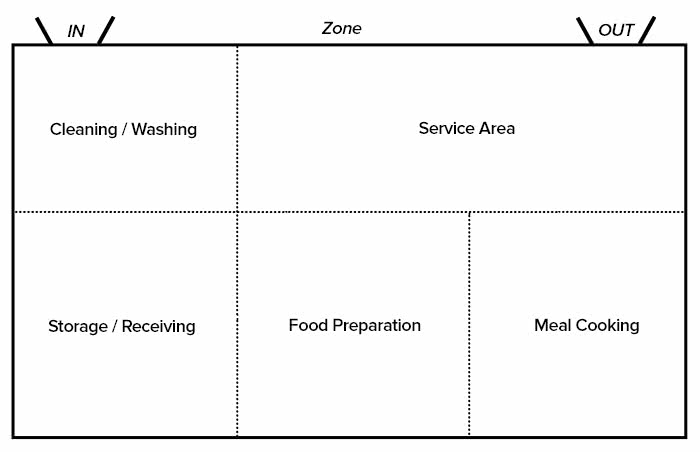
A Zone kitchen layout works in a wide variety of kitchen shapes and sizes.
Source: WebstaurantStore
Whichever kitchen layout fits your needs, it is a good idea to test your strategy before installing any permanent equipment. Have employees walk through workflows to make sure there are no traffic jams or rubbed elbows. Then you can lock the equipment in place.
Step 3. Place Restrooms On Your Restaurant Floor Plan
Restrooms should be available, but different, from the dining area. Having a restroom door which adjoins a dining room is not a comfortable situation for anybody. From the restaurant floor plans below, you’ll realize the restrooms are adjacent to the dining room, but do not open right onto the dining room. This sort of installation is convenient for all.
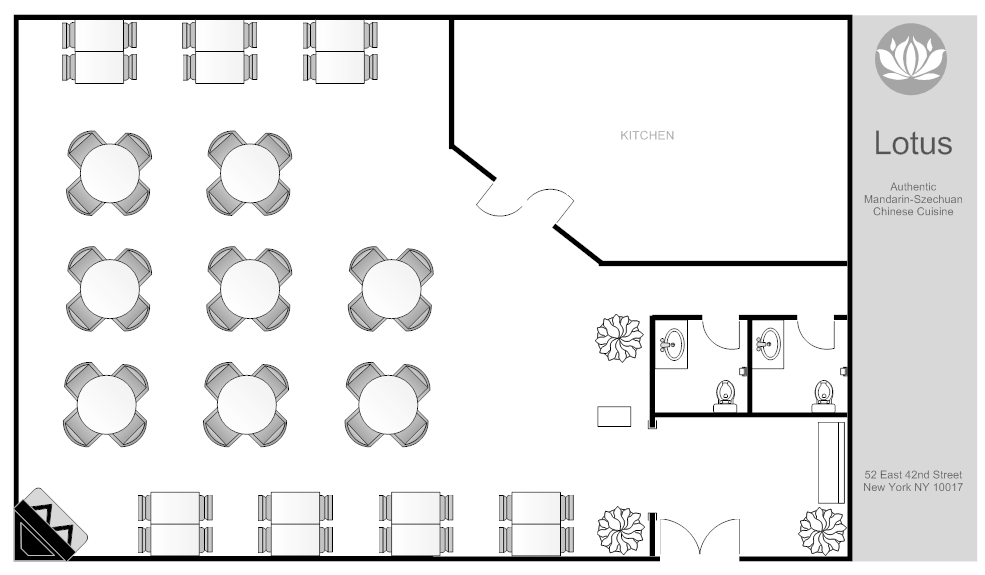
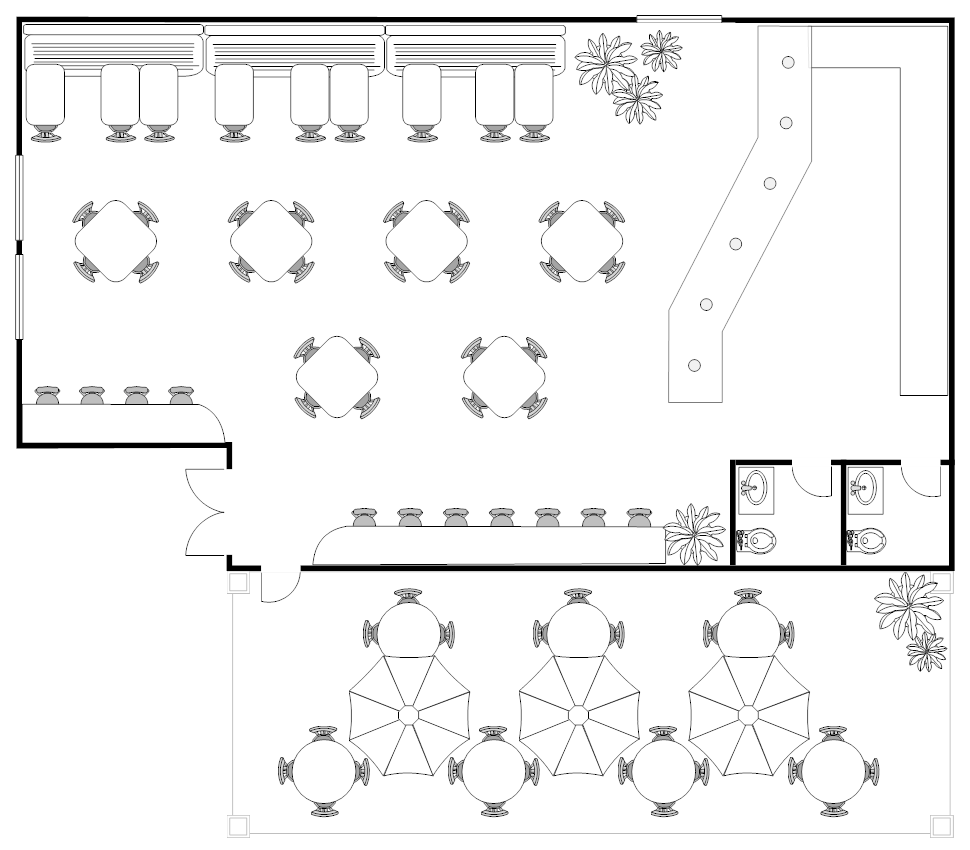
Restrooms should be easily accessible from dining places, but not available directly onto the dining area floor.
It’s a fantastic idea to think about restroom positioning after you’ve identified your kitchen area in your restaurant floor plan. Placing your restrooms near flats may help save you money on your pipes by tying into lines that are nearby. If that is not feasible, you are going to need to completely plumb this region, so put your restrooms carefully. This isn’t a component that is easily moved about the space.
Finally, do not be stingy with toilet area. Your patrons will recall a bad experience in this particular location. Restrooms must be roomy, not tight and cramped, and fitted using easy-to-clean finishes and fixtures.
Step 4: Put a Tavern or Countertop Area in Your Restaurant Floor Plan (Optional)
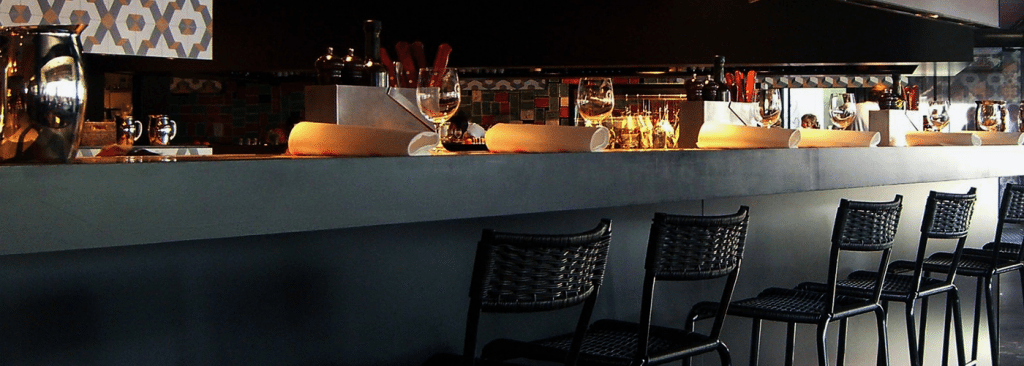
Source: WebstaurantStore
Bar or countertop dining places can be a great addition to your restaurant floor plan. If you haven’t contemplated one, you should if space allows. It’s a profitable use of space than a large waiting area as patrons may order drinks while they wait. Plus it creates small-footprint dining room because diners anticipate less elbow room at a pub than they do in a desk.
For placement, a pub or counter that shares its back wall with the kitchen works very well, especially in tiny spaces. That lets you tie into your current plumbing for bar sinks, and you can add a pass-through window to the kitchen for a diner, cafe-style coffee home, or bistro restaurant concept.
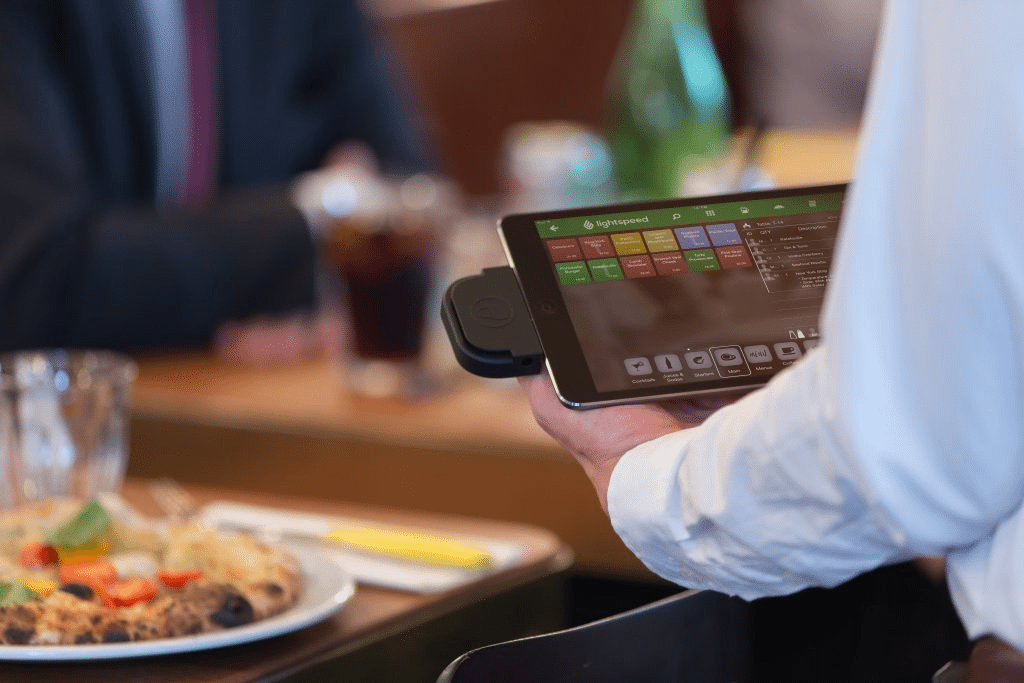
Source: Lightspeed Restaurant POS
A bar or countertop space is also a excellent place to position an installed or restaurant POS enroll for easy waitstaff access.
Step 5: Place & Design the Dining Area On Your Restaurant Floor Plan
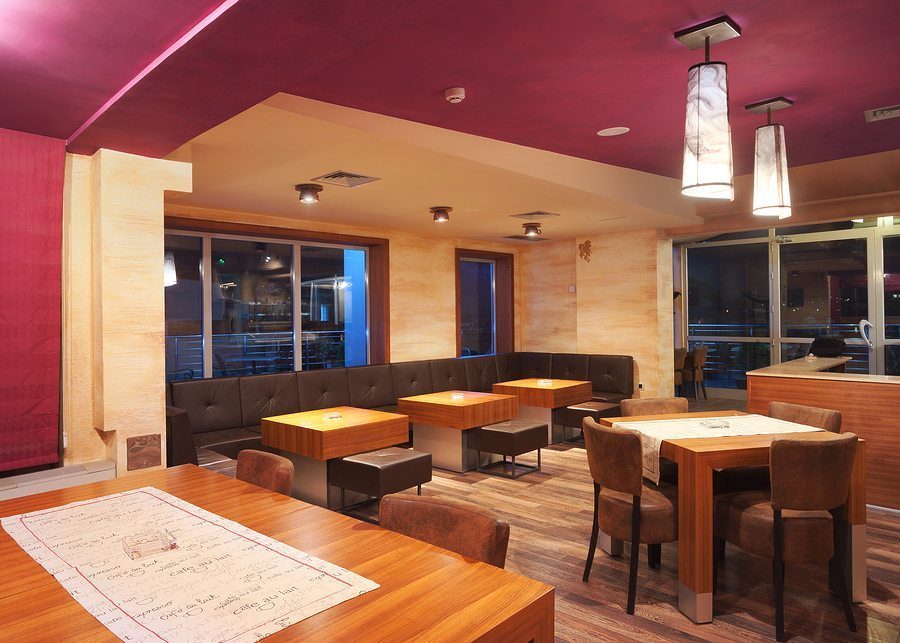
Dining rooms which combine seats and styles offer patrons their pick of relaxation.
Source: BigStock
Your dining area (or dining area plus counter or pub ) should use around 60% of your restaurant floor plan. In this space, you have many table style and placement options. What you do here really depends on the type of dining concept you are working.
Communal dining experiences and open-concept restaurant designs are extremely on-trend and translate nicely to smaller spaces. In open-concept dining, keeping the area open to the kitchen is a budget-friendly alternative, as is a exposed ceiling with components such as ductwork and pipes visible and part of the plan experience.
— Maria Elena Holguin, ASID, Robb & Stucky
The first step in this equation is checking with the regional building permit office for occupancy tips for your space. Experts recommend checking the ADA guidelines for access as well. Having all this information up front ensures that your dining room design and floor plan meets applicable regulatory guidelines.
Here are general rules-of-thumb for planning your seats distance and traffic flows:
Restaurant Floor Plan Space Planning — Suggested Area Feb Diner
| Dining notion | Square feet per-person |
|---|---|
| Fine Dining | 18-20 square feet |
| Full Service Casual Dining | 15-18 square-foot |
| Countertop Diner or Bistro Service | 12-15 square feet |
For table spacing, hospitality experts recommend the following space allocation according to occupied seats:
Restaurant Floor Plan Space Planning — Table & Chair Spacing
| Unit | Distance between each |
|---|---|
| Occupied chairs | 18-20 inches |
| Tables set in parallel | 42-60 inches between sides |
| Tables set in to a diagonal | 24-30 inches involving corners |
Of course, much of your room allocation for tables and chairs is dependent upon your restaurant concept and the seating units you’re using. Oftentimes, mixing chairs types can take advantage of your dining space. Combined seating plans which make smart use of wall space impart a roomy feel for patrons and gives an efficient traffic flow for waitstaff. This Is the Reason You see many restaurants offer both table and booth seats areas, like this layout shows:
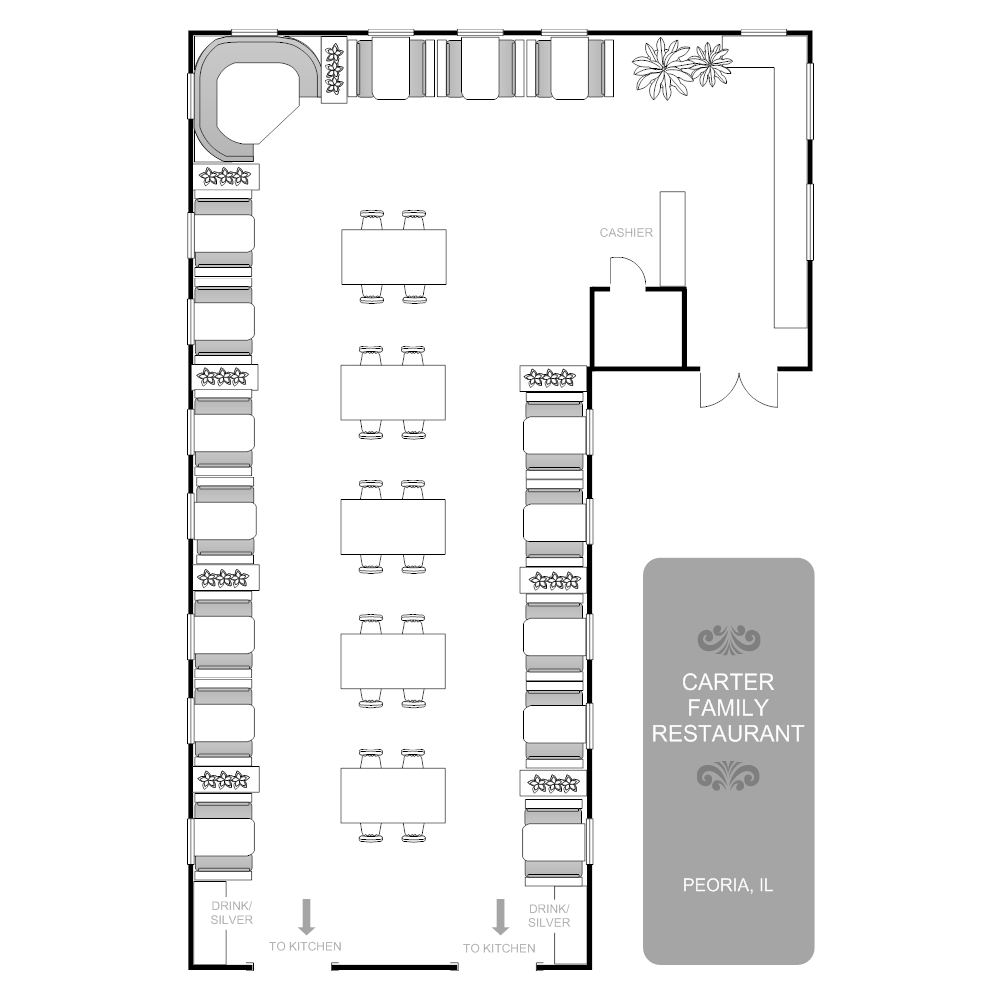
Source: SmartDraw
Booths maximize wall space and mixing them in with tables gives patrons their pick of chairs. Many dining theories even add stylish countertop-height tables into the mix, which creates an inviting atmosphere and provides visual variety. Plus, tables are easily moved to accommodate large parties or to change the appearance and flow of the area. So it is always a good idea to include a table section into your strategy, even in a small dining area.
Dining Places Let You Communicate Your Concept
Your dining room is where you’ll boldly communicate your restaurant concept and brandnew. Color schemes, design materials, decorative accents, finishes and fabrics, and even tabletop and chairs options all play a role on your dining brand. So, make sure to actually contemplate what your brand is and how you’re able to deliver the expertise through visual and tactile means.
You need to be able to communicate your own dining concept to someone else in a couple of paragraphs, such as an elevator pitch, and have them . If you can’t, then you’re not likely to translate your concept to a viable appearance and feel. You have to understand what makes your notion distinctive and distinct to develop an artistic and decorative eyesight.
— Glenn D. Cordua Cruz, Ph.D., Assistant Professor, Conrad N. Hilton College, University of Houston & Co-Founder of those Cordua Family Tavern
But this part of the equation does not need to run up a huge layout invoice. Where are your favourite places to dine? What look-and-feel experiences inspired you to start your performance in the first location? Look to such as sources of inspiration, however do not believe you have to blow your budget on high-dollar decor and fixtures.
Actually, 3 budget-friendly design axioms are very on-point for restaurant branding:
- Simplicity can offer luxury on a dime
- A eclectic look can be had for pennies using Pinterest thoughts and flea market finds
- Chalkboard walls are classic, versatile, and cheap, and casual diners love them
Startup restaurants and bars have the typical challenges that many commercial and residential spaces have… money! You must get creative in your design once the budget is tight and there’s not a lot left over for the”pretty.” That is where vintage/flea market/thrifted bits can come into play big budget items. Plus a combination only makes the distance that much more interesting.
— Phara Queen, Allied ASID, Phara Queen Design
Vintage finds can allow you to craft diverse elegance on a budget, but they are not allowed for spaces that are comprehensible. This upscale bed-and-breakfast’s bar and lounge combines vintage pieces with a clever mix of textures to define three distinct serving and seating areas within a limited space.
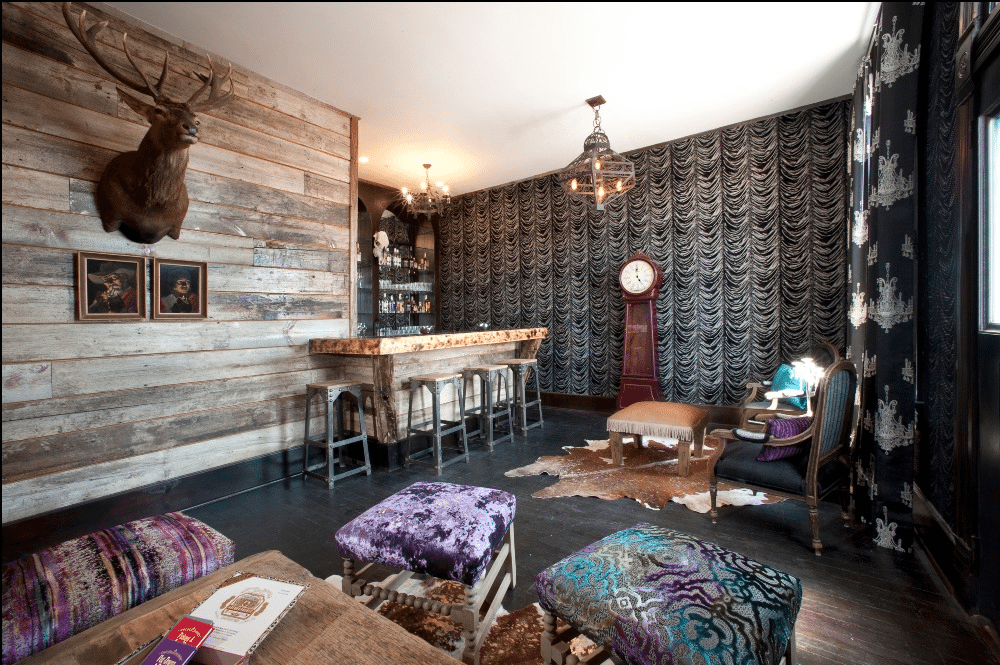
Photo: Phara Queen Design
Do You Offer Patio or Outdoor Dining Service?
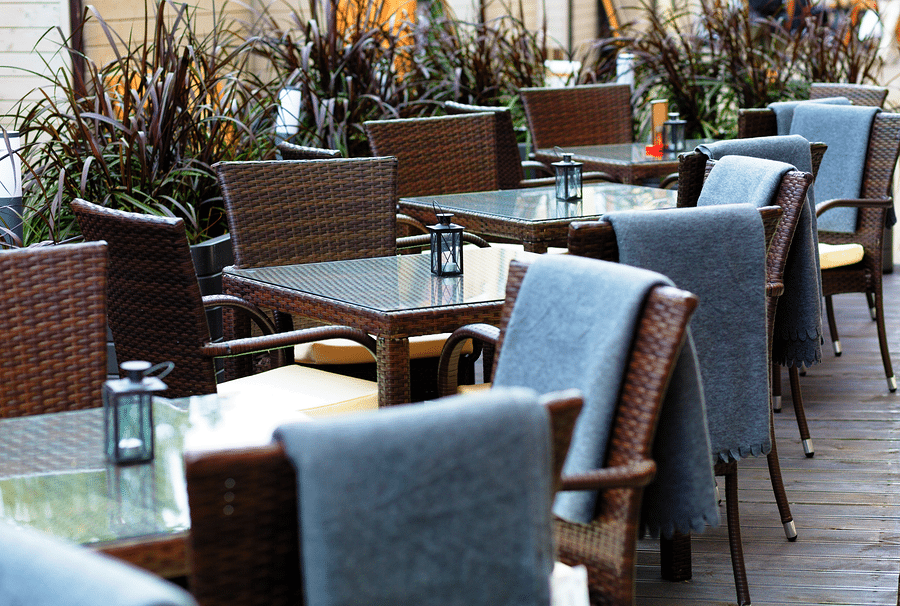
Outdoor dining areas can be chic or casual provided that patrons and waitstaff are not cramped.
Source: BigStock
Restaurant design theory doesn’t stop at the patio door, nor will your branding. Be sure to expand your aesthetic concept to outdoor areas and employ proper space-planning guidelines, as shown in this indoor-outdoor cafe design:
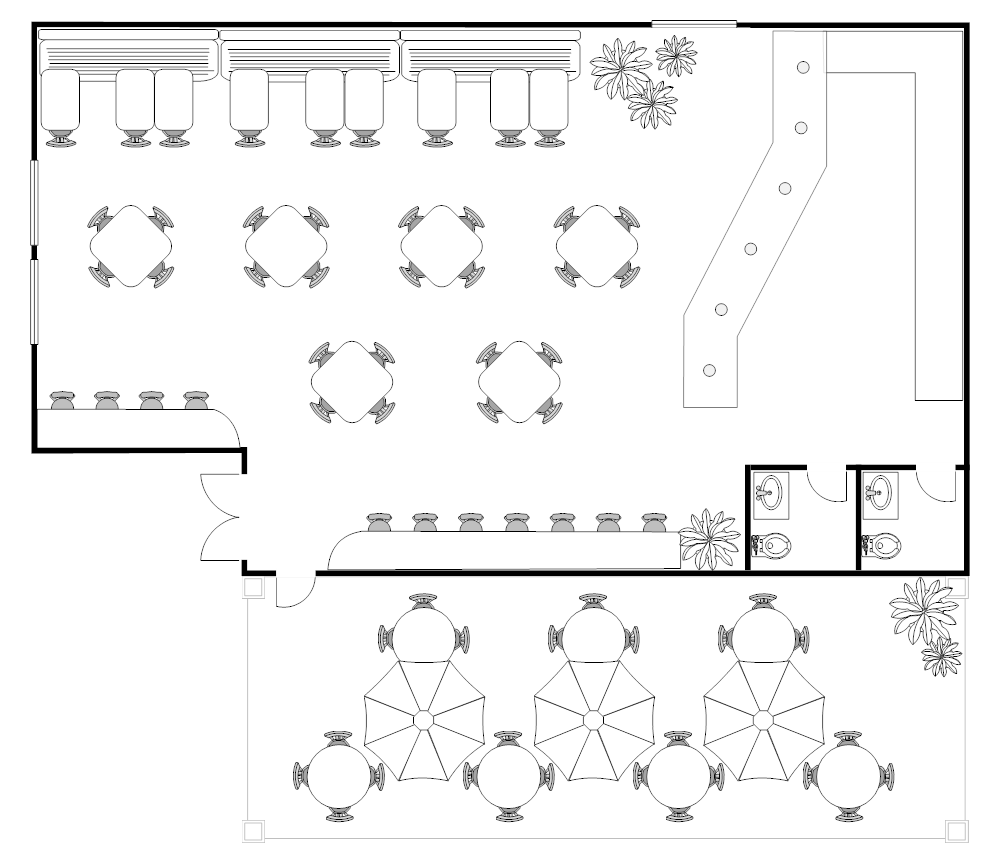
Source: SmartDraw
In outdoor spaces, plan for adequate walking space between tables and umbrellas (if you use them) to ensure patrons and waitstaff do not need to crouch to avoid colliding with an umbrella. Also, plan for wide walkways and aisles which run alongside plants. Patrons aren’t too fond of squeezing from the greenery to get to their own table.
Step 6: Place an Entry & Waiting Area On Your Restaurant Floor Plan
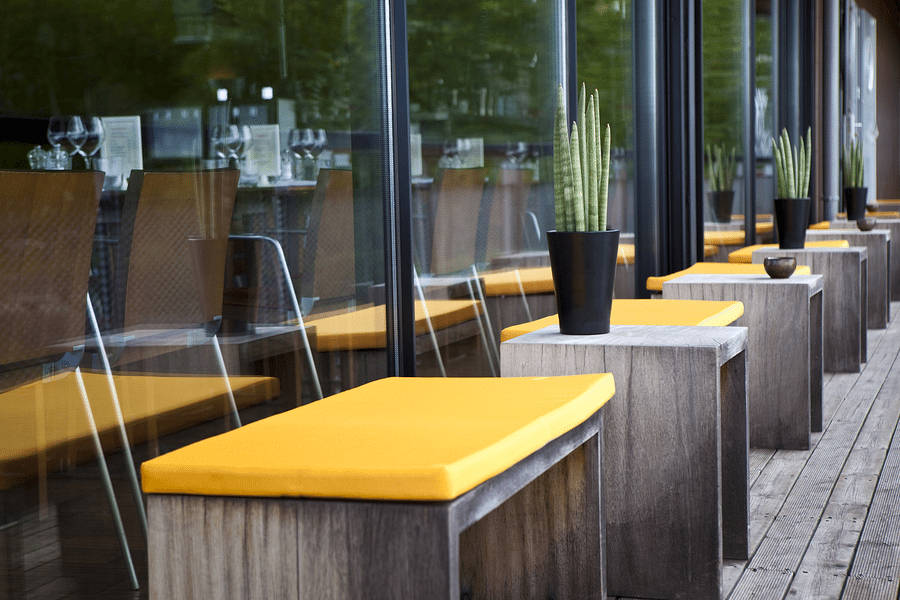
Outdoor waiting spaces are perfect when inside space is tight.
Source: BigStock
The last place we cover on your restaurant floor plan is the first place your patrons see. Yes, your own entry is every bit as important as the other areas in your floor plan covered over. Nonetheless, it’s last on our list as most experienced restaurateurs work from the back-of-house (kitchen) forward when designing a restaurant floor plan.
This back-of-house into front-of-house design approach ensures that you don’t over-allocate distance to the entry, waitingdining spaces at the cost of your own kitchen, which is obviously a mistake. Just after defining your dining and kitchen spaces in your restaurant floor plan should you allocate space on your waiting place. For cafe, bistro, and diner concepts, your entrance could be minimal, especially if you have a bar or counter where patrons can wait.
If you need defined wait up space front, strategy this region to permit traffic flow in and out, and accommodate seating if at all possible. A few comfortable chairs work, but bench seating against the wall may be better use of a tight room. And, if it works in your location and climate, adding outdoor seating for your wait area may be fantastic idea. A couple patio-type seats or benches can do the job with style.
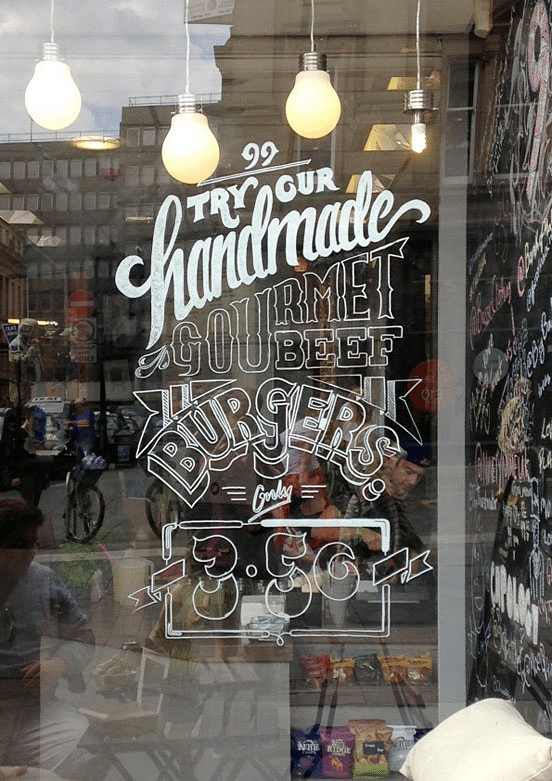
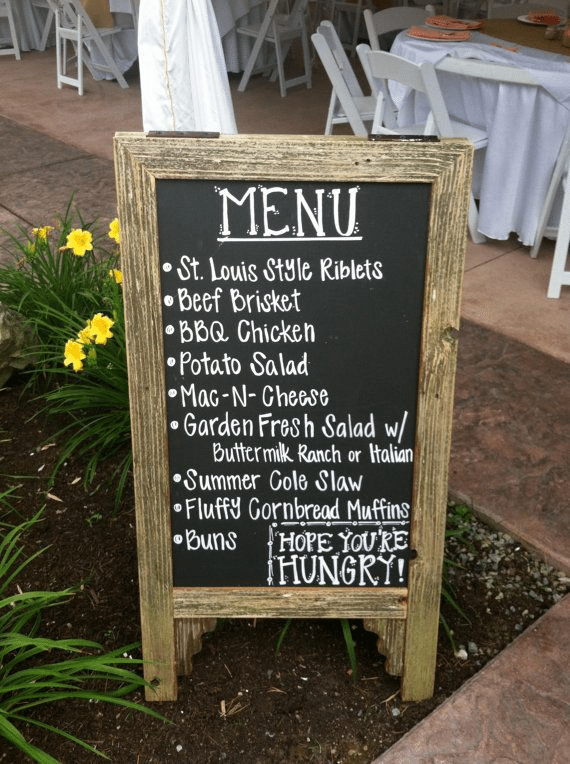
Entrance signage costs little and attracts attention from passers-by.
Source: The Style Inspiration (left) Pinterest (correct )
Like your dining space, the design of your entry should clearly convey your restaurant concept and brand. Here is the first visual and tactile experience your patrons have when entering your institution, so take your dining room layout decisions forward to your entrance, and even outside. On a limited budget, it is possible to impart your brand with entry signage on windows or chalkboard walls. Or, simply customize your doorway to compliment your brand and signage concept.
The Bottom Line
Your restaurant floor plan dictates the workflow of your entire operation, from kitchen and dining places to client amenities like waiting areas and restrooms. In restaurant design and design, every element has a purpose and there should be no afterthoughts.
Experts concur that the first region to identify on your own restaurant floor plan is the kitchen. Allocating about 40% of your complete area into the kitchen is a fantastic rule-of-thumb. Next, make sure your kitchen area can accommodate a smooth preparation cook, plate, and function workflow. An assembly-line strategy is recommended for many establishments running a team. After that key step, other spaces can be placed to a restaurant floor plan and you can begin working on the visual appeal, both indoors and outside.
Do not forget to check out Lightspeed Restaurant as a point-of-sale method for your restaurant. Lightspeed Restaurant keeps your restaurant running smoothly with electronic menus, floor management, stock tracking, personnel scheduling, revenue reporting, and more, all in 1 system. Attempt Lightspeed free for 14 days.
Visit Lightspeed
Have you ever designed your restaurant, bar, or eatery? How did you approach the job? We would love to hear your experiences, advice, and insights from the comments below.

